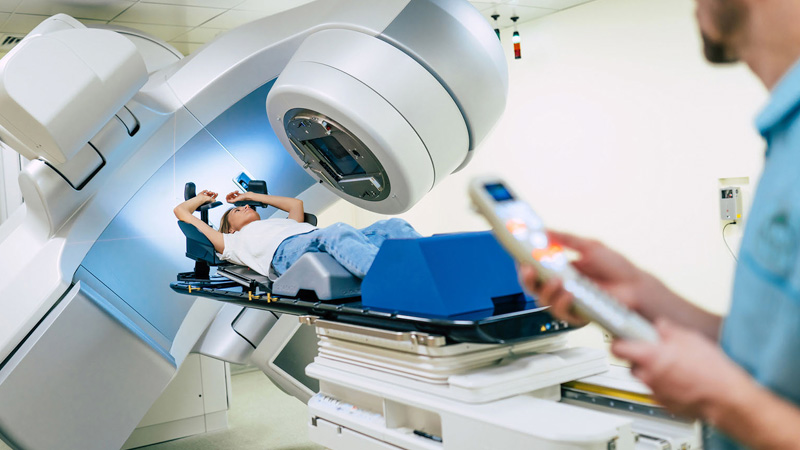Insights
Redefining RT Prior Authorization
Care pathways are also known as integrated care pathways, clinical pathways, critical pathways, or care maps. By any name, they are valuable tools to guide evidence-based healthcare and have been implemented since the 1980s.
Care pathways provide a means to improve multidisciplinary communication and care planning, including primary and secondary/tertiary care. Further, pathways aim to improve communication between clinicians and patients as well as patient satisfaction.
Radiation Oncology Pathways – The HealthHelp Difference
ASCO (American Society of Clinical Oncology) describes care pathways as having a positive impact on quality of care, efficiency, and teamwork . Rising healthcare costs and the overall shift toward a value-based healthcare delivery system have led to the rapid proliferation of clinical pathways in oncology.
Through appropriate reduction in the number of therapy fractions and ensuring the right treatment modality, pathways not only help reduce provider administrative burden but also minimize adverse and long-term health effects for patients. HealthHelp’s Radiation Therapy pathways are end-to-end, detailed, and evidence-based treatment protocols for specific types of cancer care. They are designed to enhance care quality, mitigate costs, and streamline care delivery. By aligning with the ASCO, ASTRO and NCCN recommendations, we ensure our pathways meet the high standards of care.
Our solution benefits all stakeholders as it ensures the highest quality of care, lowers costs, and offers immediate prior approval for providers requesting evidence-based care. It also presents a clear roadmap to providers that help them offer the standard of care to their patients.
Dr. Ron Lopez, Chief Medical Officer at HealthHelp, states, “Radiation therapy care pathways provide the solution to the 3 major problems attributed to prior authorization are administrative burden, lack of transparency and delays in care. By simply entering a cancer type, stage and size, the requesting party is presented with the best modality and number of units necessary to produce the best outcome. With one click, an authorization can be obtained. If the case is an exception to that recommendation, the exceptions with their associated best recommended modality and number of units are also clearly visible and may be selected with one click. Transparent, easy to use, and without delays in care.”
Provider Administrative Burden Reduction
From the physician point of view, care pathways can provide two benefits to them and the patients they are serving:
- Faster processing of authorization request with the ability to receive immediate authorization at the time of request.
- Improved quality of care using evidence base guidelines based on NCCN and ASTRO national standards of care.
Today, there is a hyperfocus on the prior authorization process and how cumbersome and time consuming it can be for physicians causing a delay in care for the patient. Prior authorization is not intended to hinder care. The purpose of prior authorization is to ensure all patients, without regard to where they live or their proximity to cancer centers of excellence, get the highest quality care to provide the maximum benefit while doing the least amount of harm. Care pathways do just that.
Traditional prior authorization requires that physicians enter the exact procedure they will be doing with the precise number of fractions and then submit clinical evidence to support they have indeed prescribed evidence-based care for their patient. Often there is no clinical information provided and there are several phone calls back and forth with the physician office to get the information needed. If the precise information is not provided, the case results in an adverse determination. Once this has been provided to the physician and patient, the physician must then go through the appeals process to attempt to get his patient the care he feels they need. This process can take weeks often delaying the scheduling of treatment and ultimately can affect patient outcomes.
Through the use care pathways, the HealthHelp team can guide requesting physicians to the evidence-based standard of care through pathways with a minimal amount of information from the provider. This process can even be done more expediently through an integration with the ordering physician’s EMR to extract the clinical information with little or no data entry required. After the information is collected, the HealthHelp provider portal, WebConsult, will provide the evidence-based standards of care to the physician and, if selected, the physician office will get an immediate approval of the entire course of treatment. A simple process that can take less than 3 minutes.
HealthHelp also recognizes that there are certain situations in which a patient will not fit into the standard treatment regimen. Every patient is a unique individual and as such, physicians have the option of going straight to clinical review of a treatment path that may differ from NCCN and ASTRO guidelines. In these instances, clinical information will be obtained through our AI software or requested from the physician office. Peer to Peer conversations may occur prior to the rendering of a determination to ensure a specialist-to-specialist conversation is occurring timely and work to avoid adverse determinations and additional process, such as Appeals, after a determination has been rendered. With HealthHelp’s oncology pathways, we aim to simplify the authorization process, improve quality of care, and reduce costs for all stakeholders.

About WNS-HealthHelp
HealthHelp, a unit within WNS, is a trusted healthcare technology platform for health plans’ clinical programs for over 25 years. Our unified suite of Advanced AI powered technology platform-based solutions simplifies medical complexity and workforce challenges, and enhances provider relations and member journeys (i.e., customer experiences). Our uniquely designed UM and clinical solutions were developed to fit into health plans’ existing clinical programs to advance outcomes and success. We work in partnership to understand health plan commercial and Medicare clinical programs, and determine where our solutions can advance outcomes and lower cost. There is no one size fits all, and we know how to expediently deliver the best tailored solution for a specific health plan’s needs.

About WNS
WNS (Holdings) Limited (NYSE: WNS) is a digital-led business transformation and services company. WNS combines deep domain expertise with talent, technology, and AI to co-create innovative solutions for over 600 clients across various industries. WNS delivers an entire spectrum of solutions including industry-specific offerings, customer experience services, finance and accounting, human resources, procurement, and research and analytics to re-imagine the digital future of businesses. As of December 31, 2024, WNS had 63,390 professionals across 66 delivery centers worldwide including facilities in Canada, China, Costa Rica, India, Malaysia, the Philippines, Poland, Romania, South Africa, Sri Lanka, Turkey, the United Kingdom, and the United States.
For more information, visit www.wns.com.
Related Articles
2025 Medicaid Impact Study
Meeting the Moment for Medicaid with Scalable, Patient-Centered Utilization Management
Navigating Medicaid’s New Era
A New Chapter for Medicaid Regarding Utilization Management (UM)
Rotator Cuff Surgeries: Trends, Best Practices, and Conservative Care
Rotator cuff injuries are common. Surgeries to fix them? Even more so.




